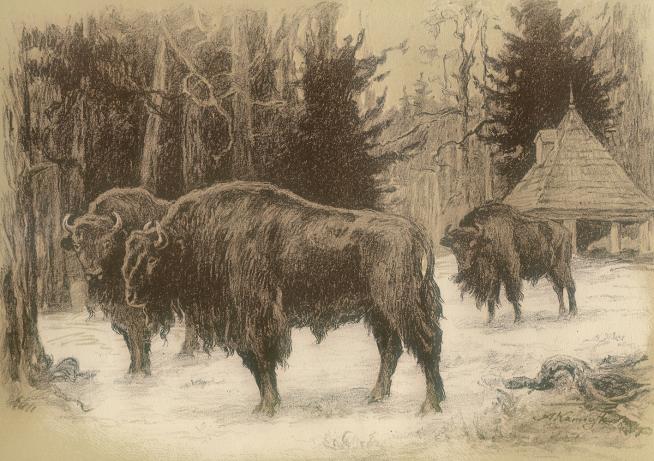My research project is focused on European bison, Bison bonasus (a species that was once widespread almost throughout Europe) and the Bialowieza Forest (BF). I investigate the tangled and complicated picture of the BF management in the long nineteenth century. During this period several zoologists undertook expeditions to BF with the aim of observing, studying, and usually also killing a bison, which became a desirable specimen for European museums. The most ambitious of the expeditions was led by Professor Nikolay Kulagin (1906-08).

European Bison’s Feeding Sites. (Kamieński A. 1912. Szkice z Puszczy Białowieskiej. Warszawa: Świat).
Using this expedition as a case, I am going to analyse the re-formulation of the research question in the process of studying European bison: how were attempts to detect signs of “natural degradation” replaced by the ecological study of bison (their habitat needs, behaviour, nutrition, parasite infestation etc)?
Another set of questions we should ask when analysing naturalists’ studies and writings on Bialowieza’s bison (and the forest) is how naturalists’ opinions influenced the process of administrative decision-making? How were the “strictly-scientific” results and scientists’ advice perceived by state administration? What part of this advice had any chance to be implemented in everyday bison management? What was not implemented and for what reason? And vice versa – how did local knowledge influence scientific research?

